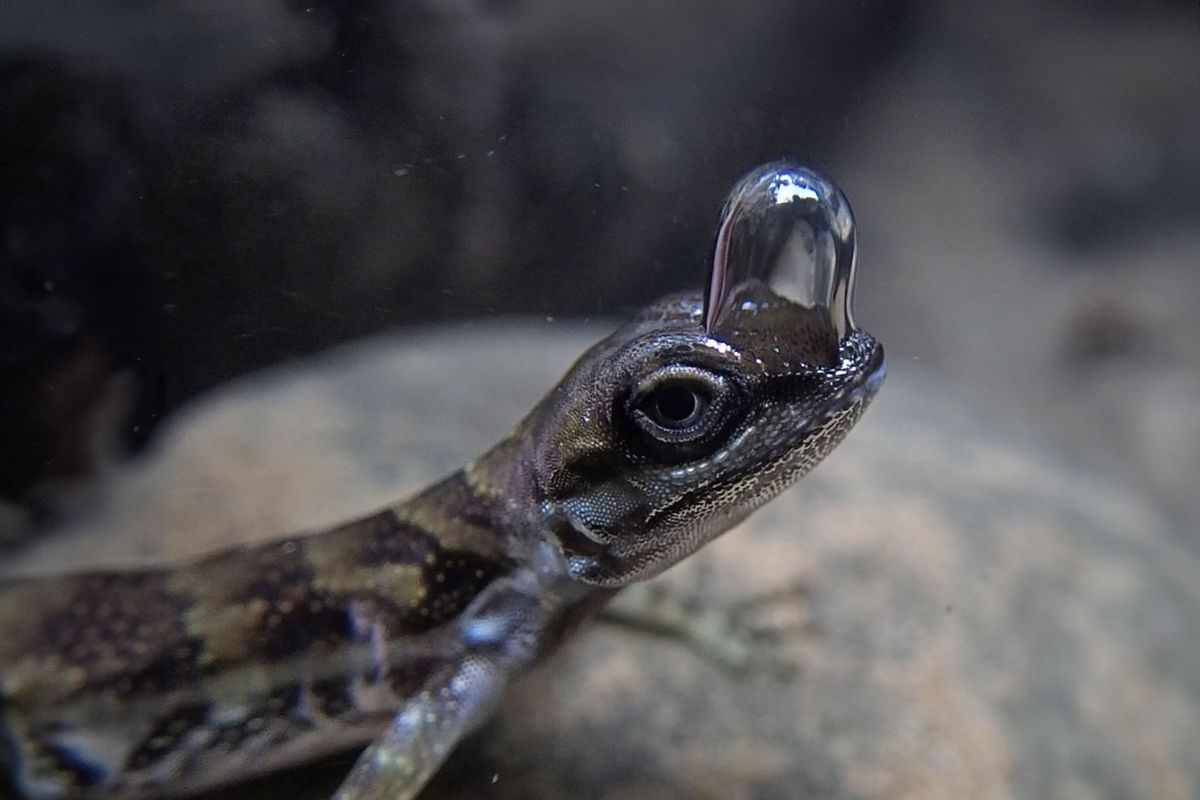When Dr. Lindsey Swierk studies water anoles in Central and South America, she can feel their presence even when she doesn't see them.
The assistant research professor of biological sciences at Binghamton University studies Anolis aquaticus, the lizard best known for being semi-aquatic, color-changing and 5 to 8 inches long (13 to 20 centimeters.)
"When you walk out into the rivers where they live, you know that there are dozens of eyes on you, always," Swierk recalled. "They are so observant, always looking and watching, but staying very still on their favorite perches. I first noticed the lengths of their dive when I was trying to capture one, and it dove almost at my feet. I spent a long time just staring at it, in wonder."
Swierk's observations aren't just idyllic. In a recent study Swierk published in the journal Biology Letters, she revealed her latest discovery: Water anoles are able to survive underwater for extended periods of time, despite lacking gills, because they form a special bubble over their nostrils.
In addition to allowing them to breathe underwater, the bubble makes it possible for them to stay still under the surface for lengthy periods and avoid the attention of birds and snakes who perceive them as "the chicken nuggets of the forest."
This is the first study to strongly indicate that a vertebrate species can use bubbles to breathe under water, a trait that several bugs and invertebrates are known to have adapted. To test whether water anoles are an exception to the rule, Swierk prevented the formation of normal rebreathing bubbles over the lizards' nostrils by applying a commercial emollient to their skin surface.
"Lizards that were allowed to rebreathe normally remained underwater an average of 32% longer than those with impaired rebreathing, suggesting a functional role of rebreathing in underwater respiration," Swierk wrote in the study. Speaking with Salon, Swierk said that the study demonstrates "there's likely a function to rebreathing. Lizards that rebreathe can dive longer, and lizards that dive longer are more likely to survive predator encounters." Skeptics of this hypothesis argue the lizards are just blowing bubbles as a side effect.
"My lab is very excited about understanding the mechanisms that allow this trait to work, and also any future materials applications," Swierk told Salon.



Shares